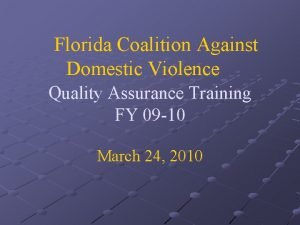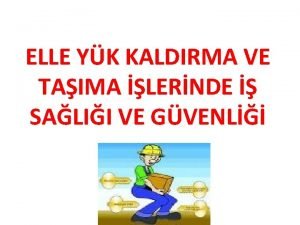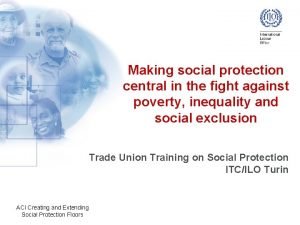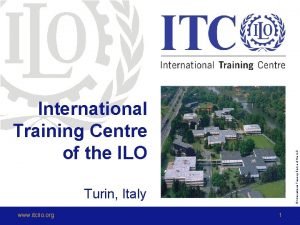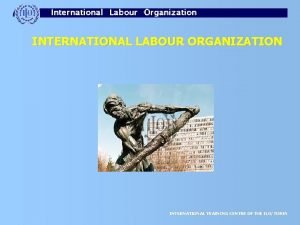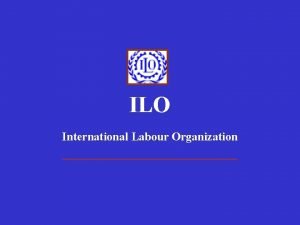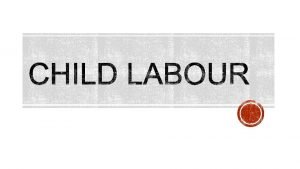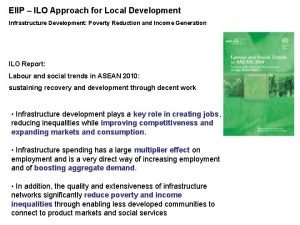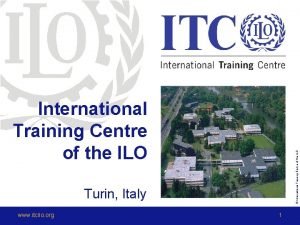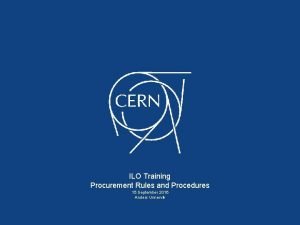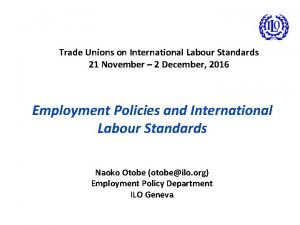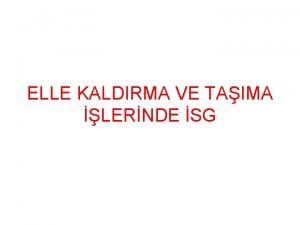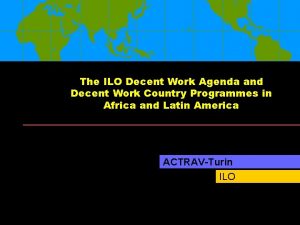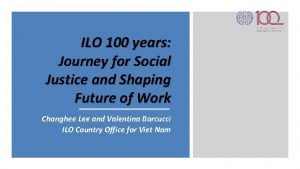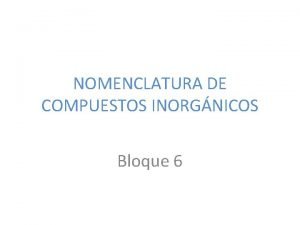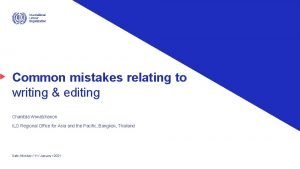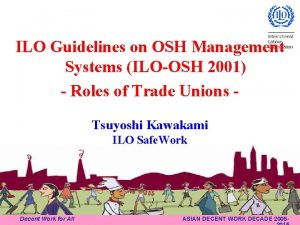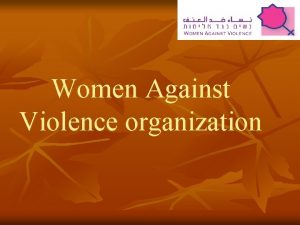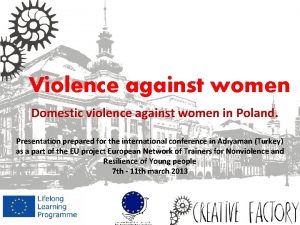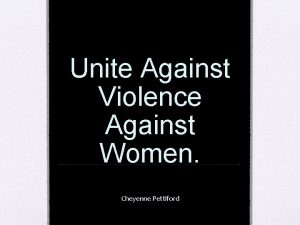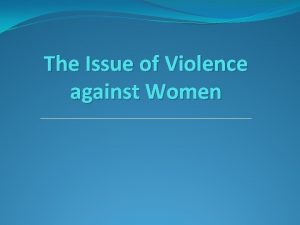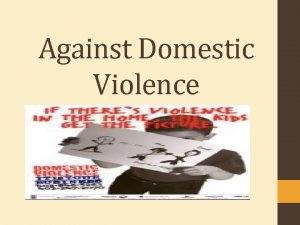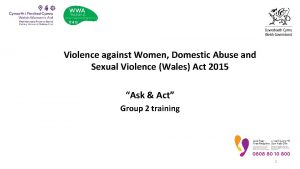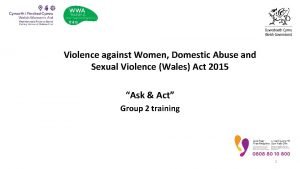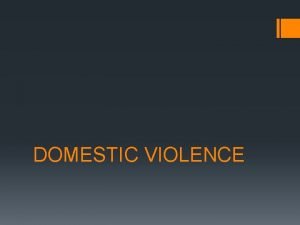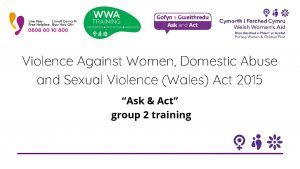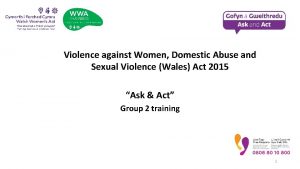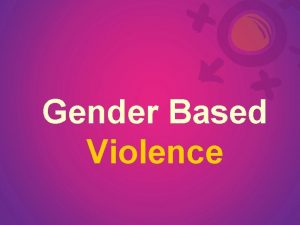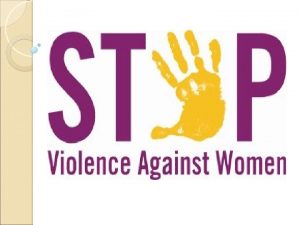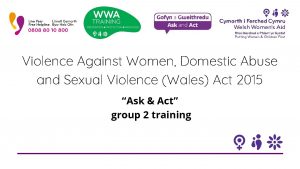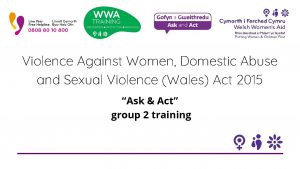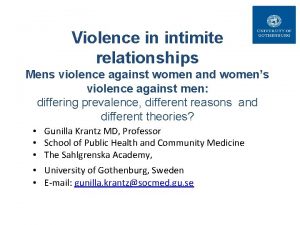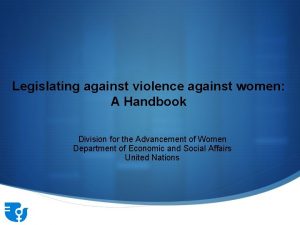Towards an ILO instrument on violence against women





















- Slides: 21

Towards an ILO instrument on violence against women and men in the world of work Bali, 27 May 2016 Ruwan Subasinghe ITF Legal Advisor

�What is the ILO and how does it work? �ILS and supervisory system �Why ILS on VAWM? Why now? �Existing ILS on topic and relevant regional/international instruments �What would an ILS on VAWM look like? �Standard setting process �What you can do to ensure adoption & ratification of ILS �Q&A

What is the ILO and how does it work? (I) �Founded in 1919 �United Nations specialised agency � 187 member states �Tripartite structure �Main aims of the ILO are to promote rights at work, encourage decent employment opportunities, enhance social protection and strengthen dialogue on work-related issues.

What is the ILO and how does it work? (II) International Labour Conference 4 delegates per member State 1 workers’ delegate 2 governments delegates 1 employers’ delegate Governing Body 14 workers’ representatives 28 governments representatives International Labour Office 14 employers’ representatives

What is the ILO and how does it work? (III) �Responsible for drawing up and overseeing international labour standards (ILS) �Development cooperation �Research and information

International Labour Standards (ILS) �ILS are legal instruments setting out minimum standards, principles, and rights at work �Conventions are legally binding international treaties �Recommendations are non-binding guidelines

Core Labour Standards (CLS) �Freedom of association and collective bargaining (C 87 and C 98) �Elimination of forced and compulsory labour (C 29 and C 105) �Abolition of child labour (C 138 and C 182) �Elimination of discrimination in respect of employment and occupation (C 100 and C 111)

ILO Supervisory System (I) �Regular reporting under Article 22 of the ILO Constitution �Committee of Experts (CEACR) �Committee on the Application of Standards (CAS)

ILO Supervisory System (II) �Committee on Freedom of Association (CFA) �Article 24 Representations �Article 26 Complaints

ILO Supervisory System (III) �ITF and ITUC Article 24 Representation against Qatar concerning violations of Convention 111 �Pregnancy and maternity related dismissals �Marriage bar �Rest period regulations �Demeaning treatment of female crew, harassment and surveillance �No effective redress

ILO Supervisory System (IV) �ILO: Qatar guilty of systemic workplace sex discrimination, including in its past and current work contracts, which allow it to automatically terminate the employment of women cabin crew who become pregnant, as well as in its prohibition on women being dropped off/picked up at/from company premises by a man other than their father, brother or husband. �Company: Under the new regulations, women who become pregnant are offered temporary ground jobs and staff can also get married after notifying the company. �ITF assessment: Positive, but changes only cosmetic?

Impact of ILO Jurisprudence (I) �Cases of progress �International soft law instruments (ex. UN Guiding Principles on Business and Human Rights) �Corporate Social Responsibility (CSR) policies �National and regional court decisions �Institutional loan conditions �Trade agreements

Why ILS on VAWM? Why now? �No specific international standard dealing specifically with the issue of genderbased violence at work �ILO Perspective

Why ILS on VAWM? Why now? � UNi. TE to end violence against women (2008) � General discussion on gender equality at heart of decent work (ILC 2009) �Resolution to combat gender-based violence at work � Governing Body proposal “Gender based violence in the world of work” (November 2012) � UN Commission on Status of Women (2013) � ILO centenary initiative on women at work (2013) � Sustainable Development Goals (5. 2 and 8. 5) and the Decent Work Agenda (2015) � General recognition of human rights and business case for combating phenomenon

Existing Instruments �International �Universal Declaration of Human Rights �ICCPR, ICSPR, CEDAW, Palermo Protocol, ICC Statute �Regional �ACHPR Protocol, Inter-American Convention, Council of Europe Convention �International policy instruments and model legislation �Jurisprudence

Existing ILS � Forced Labour Convention, 1930 (No. 29) � Migration for Employment (Revised) Convention, 1949 (No. 97) � Equal Remuneration Convention, 1951 (No. 100) � Discrimination (Employment and Occupation) Convention, 1958 (No. 111) � Migrant Workers (Supplementary Provisions) Convention, 1975 (No. 143) � Workers with Family Responsibilities Convention, 1981 (No. 156) � Indigenous and Tribal Peoples Convention, 1989 (No. 169) � Worst Forms of Child Labour Convention, 1999 (No. 182) � Maternity Protection Convention, 2000 (No. 183) � Domestic Workers’ Convention, 2011 (No. 189) � Recommendations 200 and 204

What would an ILS on VAWM look like? �ITUC/Workers’ Group supports a Convention and a Recommendation �Definitions �GBV/VAW? �World of Work – domestic, familial abuse? Extension of workplace? �Provisions to prevent GBV at work: �Legislation (labour, OSH, harassment, discrimination, criminal) �Policies (eg. due diligence, training) and collective bargaining (eg CUPE, UNIFOR, ACTU)

What would GBV aspects of an ILS on VAWM look like? �Groups of workers and industries at risk �LBGT, precarious/informal/migrant workers �Transport and public services �Access to remedies and measures to protect and support victims �Education and awareness raising �Roles of tripartite constituents and social dialogue (eg. ETUC, ITF/UITP) �Labour inspection �Statistics

Standard setting process

What you can do � 9 things you and your unions can do �Lobby your national centers, employers and governments �Current government/employer positions:

Q&A Thank you! @ruwansubasinghe
 Physical violence against women
Physical violence against women Florida coalition against domestic violence
Florida coalition against domestic violence What is active instruments
What is active instruments Algdgadu
Algdgadu Ilo 128 sayılı tavsiye kararı metni
Ilo 128 sayılı tavsiye kararı metni Ilo social protection
Ilo social protection Ilo
Ilo International training center of the ilo
International training center of the ilo Ilo functions
Ilo functions Ilo classification of pneumoconiosis
Ilo classification of pneumoconiosis Ilo 138
Ilo 138 Structure of ilo
Structure of ilo Eiip ilo
Eiip ilo Itc ilo torino
Itc ilo torino Ilo
Ilo Ilo.org
Ilo.org Ilo 128 elle taşıma
Ilo 128 elle taşıma 4 pillars of decent work
4 pillars of decent work Ilo 100 years
Ilo 100 years Nomenclatura stock
Nomenclatura stock Ilo brand hub
Ilo brand hub Ilo-osh 2001
Ilo-osh 2001

